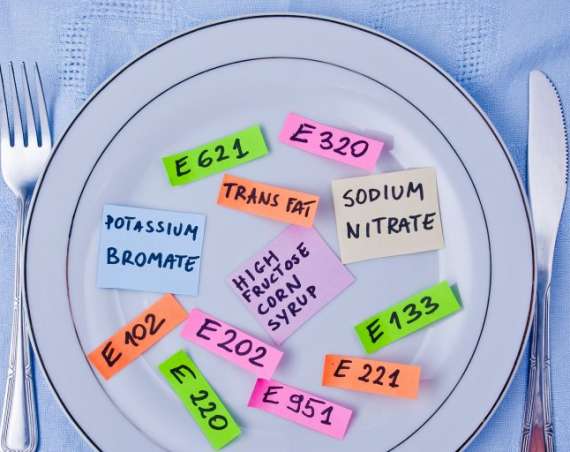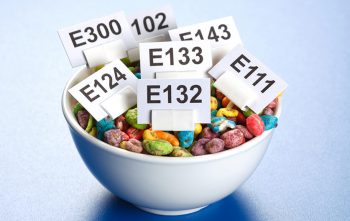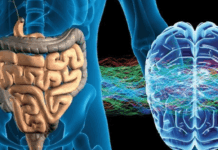
By Marco Torres,
Food industry additives and colors are one major cause of ADHD, asthma and cancer creating a toxic environment for our children’s health. Even medicines for babies and young children frequently contain these additives banned from foods and drinks and targeted at children under three years of age.
Artificial flavors and colors means it is derived from a chemical made in a laboratory and has no nutritional value. Every single artificial flavor and color in the food industry has some kind of detrimental health effect. These include neurotoxicity, organ, developmental, reproductive toxicity, allergies and cancer.
Two recent British studies found that several food dyes, as well as the common preservative sodium benzoate have an adverse effect on some children’s behavior. Researchers said the increase in ADHD diagnoses could be partly to blame on the preservative.
“It can affect their focus, their concentration. They become more easily distractible, become more impulsive. I think we’re looking at a whole population of kids with skewed immune systems,” said Dr. Kenneth Bock, who wrote a book that supports the theory that food additives could lead to hyperactivity in children.
A Southampton Study in the UK showed that additives cause hyperactivity in children within an hour after consumption. Food additives, especially the artificial colors are made from coal tar derivatives and synthetic chemicals. Within an hour of ingestion, hyperactive behavior is evident.
Cancer and Other Serious Risks from Food Dyes Revealed
Every year, food manufacturers pour 15 million pounds of artificial food dyes into U.S. foods — and that amount only factors in eight different varieties, according to the Center for Science in the Public Interest (CSPI).
In CSPI’s summary of studies on food dyes, you can see that some of the most commonly used food dyes may be linked to numerous forms of cancer. CSPI reported:
“The three most widely used dyes, Red 40, Yellow 5, and Yellow 6, are contaminated with known carcinogens … Another dye, Red 3, has been acknowledged for years by the Food and Drug Administration to be a carcinogen, yet is still in the food supply.”
In their 58-page report, “Food Dyes: A Rainbow of Risks,” CSPI revealed that nine of the food dyes currently approved for use in the United States are linked to health issues ranging from cancer and hyperactivity to allergy-like reactions — and these results were from studies conducted by the chemical industry itself.
For instance, Red # 40, which is the most widely used dye, may accelerate the appearance of immune-system tumors in mice, while also triggering hyperactivity in children.
Blue #2, used in candies, beverages, pet foods and more, was linked to brain tumors. And Yellow 5, used in baked goods, candies, cereal and more, may not only be contaminated with several cancer-causing chemicals, but it’s also linked to hyperactivity, hypersensitivity and other behavioral effects in children.
As CSPI reported:
“Almost all the toxicological studies on dyes were commissioned, conducted, and analyzed by the chemical industry and academic consultants. Ideally, dyes (and other regulated chemicals) would be tested by independent researchers.
Furthermore, virtually all the studies tested individual dyes, whereas many foods and diets contain mixtures of dyes (and other ingredients) that might lead to additive or synergistic effects.
In addition to considerations of organ damage, cancer, birth defects, and allergic reactions, mixtures of dyes (and Yellow 5 tested alone) cause hyperactivity and other behavioral problems in some children.
… Because of those toxicological considerations, including carcinogenicity, hypersensitivity reactions, and behavioral effects, food dyes cannot be considered safe. The FDA should ban food dyes, which serve no purpose other than a cosmetic effect, though quirks in the law make it difficult to do so (the law should be amended to make it no more difficult to ban food colorings than other food additives).
In the meantime, companies voluntarily should replace dyes with safer, natural colorings.”
Artificial preservatives are responsible for causing a host of health problems pertaining to respiratory tract, heart, blood and other. Some are very neurotoxic especially when combined with specific nutrients.
Please look at the ingredient lists before you purchase any processed foods. If you see any of these, don’t buy the product. Continue to educate yourself on the influx of new toxins introduced every year. Eventually, if we investigate enough the answers come. Rule of thumb, if the ingredient list has one chemical or more… it’s one too many.
TABLE OF DANGEROUS FOOD ADDITIVES | |||||
Additive Number | Name of Food Additive | ADHD | Asthma | Cancer | |
| FD&C Yellow No. 5 102 & E102 | Tartrazine (food color) | ? | ? | ? | |
| 104 & E104 | Quinoline Yellow (food color) | ? | ? | ? | |
| 107 & E107 | Yellow 2G (food color) | ? | ? | ? | |
| FD&C Yellow No. 6 110 & E110 | Sunset Yellow (Yellow food color #6) | ? | ? | ? | |
| 120 & E120 | Carmines, Cochineal (food color) | ? | ? | – | |
| 122 & E122 | Azorubine, Carmoisine (food color) | ? | ? | ? | |
| 123 & E123 | Amaranth (Red food color #2) | ? | ? | ? | |
| 124 & E124 | Ponceau, Brilliant Scarlet (food color) | ? | ? | ? | |
| FD&C Red No. 3 127 & E127 | Erythrosine (Red food color #2) | ? | ? | ? | |
| E128 | Red 2G (Red food color) | ? | ? | ? | |
| FD&C Red No. 40 129 & E129 | Allura Red AC (food color) | ? | ? | ? | |
| E131 | Patent Blue (food color) | ? | ? | ? | |
| FD&C Blue No. 2 132 & E132 | Indigotine, Indigo Carmine (food color) | ? | ? | ? | |
| FD&C Blue No. 1 133 & E133 | Brilliant Blue (food color) | ? | ? | ? | |
| 142 & E142 | Acid Brilliant Green, Green S, Food Green (food color) | ? | ? | – | |
| 143 | Fast Green (food color) | – | ? | – | |
| 150 & E150 | Caramel (food color) | ? | – | – | |
| 151 & E151 | Activated Vegetable Carbons, Brilliant Black (food color) | ? | ? | ? | |
| 154 | Food Brown, Kipper Brown, Brown FK (food color) | ? | ? | ? | |
| 155 & E155 | Chocolate Brown HT, Brown HT (food color) | ? | ? | ? | |
| 160b & E160b | Bixin, Norbixin, Annatto Extracts (yellow, red to brown natural colors) | ? | ? | – | |
| E171 | Titanium Dioxide, TiO2 (to give foods an opaque color) more on Titanium Dioxide in comments below ? | ? | ? | ? | |
| E173 | Aluminium (preservatives) | – | – | ? | |
| E180 | Latol Rubine, Pigment Rubine (preservatives) | ? | ? | ? | |
| 200 & E200-203 | Potassium & Calcium Sorbates ,Sorbic Acid (preservatives) | ? | ? | – | |
| 210 & E210 | Benzoic Acid (preservatives) | ? | ? | – | |
| 211 & E211 | Sodium Benzoate (preservatives) | ? | ? | ? | |
| 212 & E212 | Potassium Benzoate (preservatives) | – | ? | – | |
| 213 & E213 | Calcium Benzoate (preservatives) | – | ? | – | |
| E214 | Ethyl Para Hydroxybenzonate (preservatives) | – | ? | – | |
| E215 | Sodium Ethyl Para Hydroxybenzonate (preservatives) | – | ? | – | |
| 216 & E216 | Propyl P Hydroxybenzonate, Propylparaben (preservatives) | – | ? | – | |
| E217 | Sodium Propyl P Hydroxybenzonate (preservatives) | – | ? | – | |
| 220 & E220 | Sulphur Dioxide also Sulfur dioxide (preservatives) | ? | ? | – | |
| 221 & E221 | Sodium Sulfite or Sodium Sulphite (preservatives) | – | ? | – | |
| 222 | Sodium Bisulfite or Sodium Bisulphite (preservatives) | – | ? | – | |
| 223 & E223 | Sodium Metabisulfite or Sodium Metabisulphite (preservatives) | – | ? | – | |
| 224 & E224 | Potassium Metabisulphite or Potassium Metabisulfite (preservatives) | – | ? | – | |
| 225 & E225 | Potassium Sulfite or Potassium Sulphite (preservatives) | – | ? | – | |
| E226 | Calcium Sulfite or Calcium Sulphite (preservatives) | – | ? | – | |
| E227 | Calcium Hydrogen Sulphite or Calcium Hydrogen Sulfite (preservatives) | – | ? | – | |
| E228 | Potassium Bisulfite, Potassium Hydrogen Sulfite or Potassium Bisulphite, Potassium Hydrogen Sulphite (preservatives) | ? | ? | – | |
| E230 | Diphenyl, Biphenyl (preservatives) | – | – | ? | |
| E231 | Orthophenyl Phenol (preservatives) | – | – | ? | |
| E236 | Formic Acid (preservative) | – | – | ? | |
| E239 | Hexamine, Hexamethylene Tetramine (preservatives) | – | – | ? | |
| 249 & E249 | Potassium Nitrate (preservative) | – | ? | ? | |
| 250 & E250 | Sodium Nitrite (preservative) | ? | ? | ? | |
| 251 & E251 | Sodium Nitrate (preservative) | ? | – | ? | |
| 252 & E252 | Potassium Nitrate (preservative) | ? | – | ? | |
| 260 & E260 | Acetic Acid, Glacial (preservatives) | – | ? | – | |
| 280 to 283 | Calcium or Potassium or Sodium Propionates, Propionic Acid (preservatives) | ? | ? | – | |
| 310 & E310 | Propyl Gallate (Synthetic Antioxidant) | – | ? | ? | |
| 311 & E311 | Octyl Gallate (Synthetic Antioxidant) | – | ? | – | |
| 312 & E312 | Dodecyl Gallate (Synthetic Antioxidant) | – | ? | – | |
| 319 & E319 | TBHQ, Tert Butylhydroquinone (Synthetic Antioxidants) | ? | ? | – | |
| 320 & E320 | Butylated Hydroxyanisole (BHA) (Synthetic Antioxidants) | ? | ? | ? | |
| 321 & E321 | Butylated Hydroxytoluene (BHT) or Butylhydroxytoluene (Synthetic Antioxidants) | ? | ? | ? | |
| 330 & E330 | Citric Acid (NOT DANGEROUS if naturally occurring e330 & 330 citric acid additive – but other can contain sulfites and mold.) | – | – | – | |
| 407 & E407 | Carrageenan (Thickening & Stabilizing Agent) | – | ? | ? | |
| 413 & E413 | Tragacanth (thickener & Emulsifier) | – | ? | – | |
| 414 & E414 | Acacia Gum (Food Stabilizer) | – | ? | – | |
| 416 | Karaya Gum (Laxative, Food Thickener & Emulsifier) | – | ? | – | |
| 421 & E421 | Mannitol (Artificial Sweetener) | ? | – | – | |
| 430 | Polyxyethylene Stearate (Emulsifier) | – | – | ? | |
| 431 | Polyxyl Stearate (Emulsifier) | – | – | ? | |
| E432 – E435 | Polyoxyethylene Sorbitan Monostearate (Emulsifiers Gelling Stabilisers Thickeners Agents) | – | – | ? | |
| 433 – 436 | Polysorbate (Emulsifiers) | – | – | ? | |
| 441 & E441 | Gelatine (Food Gelling Agent) | – | ? | – | |
| 466 | Sodium CarboxyMethyl Cellulose | – | – | ? | |
| 507 & E507 | Hydrochloric Acid (Hydrolyzing Enhancer & Gelatin Production) | – | – | ? | |
| 518 & E518 | Magnesium Sulphate (Tofu Coagulant) | – | – | ? | |
| 536 & E536 | Potassium Ferrocyanide (Anti Caking Agent) | – | ? | – | |
| 553 & E553 & E553b | Talc (Anti Caking, Filling, Softener, Agent) | – | – | ? | |
| 620 – 625 | MSG Monosodium Glutamate, Glutamic Acid, all Glutamates (Flavour Enhancers) | ? | ? | ? | |
| 627 & E627 | Disodium Guanylate (Flavour Enhancers) | ? | ? | – | |
| 631 & E631 | Disodium Inosinate 5 (Flavour Enhancers) | – | ? | – | |
| 635 & E635 | Disodium Ribonucleotides 5 (Flavour Enhancers) | – | ? | – | |
| 903 & E903 | Camauba Wax (used in Chewing Gums, Coating and Glazing Agents) | – | – | ? | |
| 905 & 905 a,b,c | Paraffin and Vaseline, White Mineral Oil (Solvents, Coating and Glazing, Anti Foaming Agents, Lubricant in Chewing Gums) | – | – | ? | |
| 924 & E924 | Potassium Bromate (Agent used in Bleaching Flour) | – | – | ? | |
| 925 & E925 | Chlorine (Agent used in Bleaching Flour, Bread Enhancer and Stabiliser) | – | – | ? | |
| 926 | Chlorine Dioxide (Bleaching Flour and Preservative Agent) | – | – | ? | |
| 928 & E928 | Benzoyl Peroxide (Bleaching Flour and Bread enhancer Agent) | – | ? | – | |
| 950 & E950 | Potassium Acesulphame (Sweetener) | – | – | ? | |
| 951 | Aspartame (Sweetener) | ? | ? | – | |
| 952 & E952 | Cyclamate and Cyclamic Acid (Sweeteners) | – | – | ? | |
| 954 & E954 | Saccharine (Sweetener) | – | – | ? | |
| 1202 & E1202 | Insoluble Polyvinylpyrrolidone Insoluble (Stabiliser and Clarifying Agent added to Wine, Beer, Pharmaceuticals) | – | – | ? | |
| 1403 | Bleached Starch (Thickener and Stabiliser) | – | ? | – | |
References:
Source: https://wakeup-world.com
Disclaimer: We at Prepare for Change (PFC) bring you information that is not offered by the mainstream news, and therefore may seem controversial. The opinions, views, statements, and/or information we present are not necessarily promoted, endorsed, espoused, or agreed to by Prepare for Change, its leadership Council, members, those who work with PFC, or those who read its content. However, they are hopefully provocative. Please use discernment! Use logical thinking, your own intuition and your own connection with Source, Spirit and Natural Laws to help you determine what is true and what is not. By sharing information and seeding dialogue, it is our goal to raise consciousness and awareness of higher truths to free us from enslavement of the matrix in this material realm.
 EN
EN FR
FR



























Wonderful article, and very educative at that thank you. Just an idea, what would it take to come up with an app or two on a smart phone to quickly scan the fine prints to detect the suspicious ingredients as so elaborately reflected in this article. Perhaps this model can be repeated to many different areas to alert the consumer of MSGs, Fluride, etc
Charlie,that would be a great idea